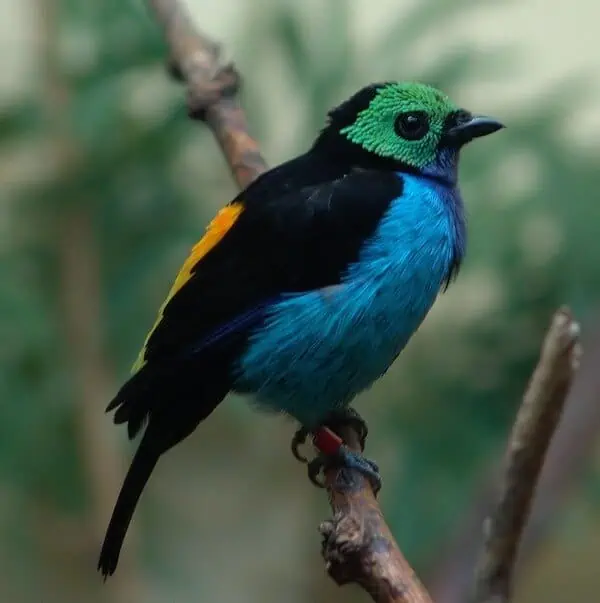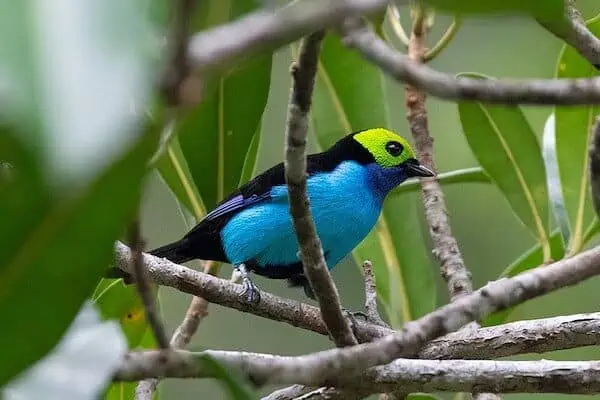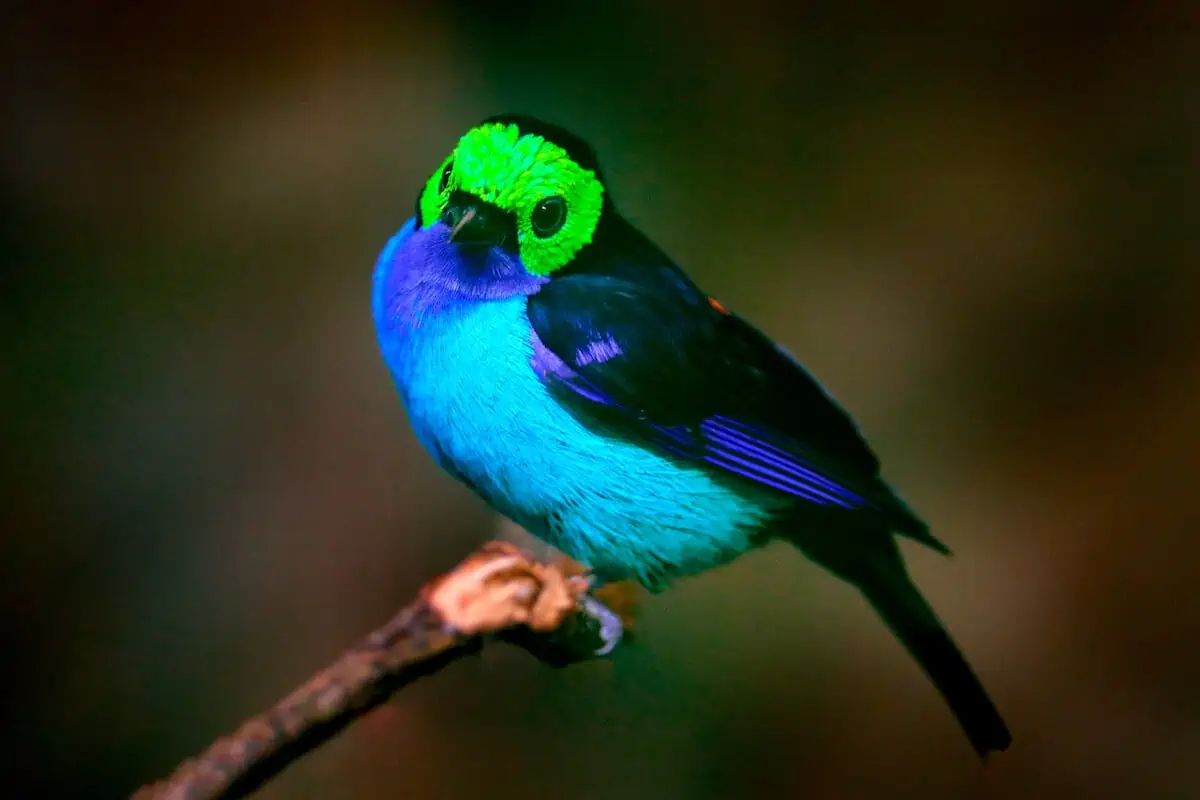South American birding may introduce you to a host of lovely birds. The Paradise Tanager, a vividly colored and somewhat unusual bird, is one of those species. We’ve gathered as many information about Paradise Tanagers as we could, but we don’t know much about these gorgeous rainforest birds.
FACTS ABOUT PARADISE TANAGERS
The Paradise Tanager is a South American native species that is most often seen in the continent’s northern reaches. Although these birds are plentiful in their native areas, they have received little attention from scientists, who are hoping to learn more about them.

For birder enthusiasts who want to learn more about this gorgeous species, here are some fascinating facts about the Paradise Tanager.
1. PARADISE TANAGERS ARE VIBRANTLY MULTICOLORED
The vividly coloured plumage of Paradise Tanagers is particularly distinctive. Their bright colors are offset by their black wings, beak, nape, and tail.
They have a purple throat, brilliant blue chest and belly, and red or yellow patch on their lower back. They wear a brilliant yellow-green mask across their face and eyes.
Since they appear to be virtually identical to one another, it’s also notoriously difficult to tell male and female Paradise Tanagers apart. Males and females are colored the same way, unlike many other birds.

2. PARADISE TANAGERS ARE NATIVE TO SOUTH AMERICA
Paradise Tanagers are native to numerous South American countries and are non-migratory. They are not found in Chile, despite their scientific name Tangara chilensis. In Peru, Venezuela, Colombia, Bolivia, Ecuador, and Brazil, you may observe these colorful birds in humid tropical and subtropical woods.
3. THERE ARE FOUR SUBSPECIES OF PARADISE TANAGERS
There are four subspecies of the Paradise Tanager. Caelicolor, chilensis, chlorocorys, and paridisea are the subspecies names. The chilensis subspecies is home to the most frequently encountered Paradise Tanager.
Several subspecies, such as a red back versus a yellow and red back, have somewhat minor differences in coloring.

4. PARADISE TANAGERS ARE OMNIVOROUS BIRDS
Omnivores, the Paradise Tanagers primarily consume fruit and supplement it with insects. They may also suck nectar from a variety of flowers.
The majority of this bird’s foraging is done in the Amazon Rainforest’s canopy, where it searches for fruit and insects among the branches of tall trees.
5. PARADISE TANAGERS ARE MOST OFTEN FOUND IN WOODLAND HABITATS
Paradise Tanagers prefer any forest or woodland environment in a lowland region, in addition to making the Amazon Rainforest their home. When foraging for their next meal, you may frequently see a Paradise Tanager in the Amazon canopies, and they may also be seen in the midstory level on occasion.

6. PARADISE TANAGERS TRAVEL IN SMALL GROUPS, SOMETIMES WITH DIFFERENT SPECIES
Paradise Tanagers prefer to join other species in little flocks of five to fifteen birds, and will regularly intermingle with groups of other tanagers and honeycreepers. During the nesting season, they may be less sociable, and throughout the December-April period, they may spend more time with other birds.
7. PARADISE TANAGERS HAVE A VARIETY OF BIRD CALLS ANNOTATED TO THEM
At any one moment, this bird may be heard releasing three different calls. A high “sizit” sound that is either sung or spoken quickly, followed by a sharp “chak” sound. At first light, they join the dawn chorus.
8. PARADISE TANAGERS CONSTRUCT CUP-SHAPED NESTS
The Paradise Tanager species has a mating season that lasts from June to late August. Paradise Tanagers will make a cup-shaped nest out of forest vegetation before laying eggs. To escape predators, these nests are built in the canopy layer.
Leaf pieces, lichen-like moss, grasses, and even a kind of white fungus are some of the most popular forms of vegetation. Males will tag along during construction, but the female is the nest builder.

9. PARADISE TANAGERS LAY 2-4 EGGS AT A TIME
The Paradise Tanager female will deposit 2-4 eggs in a tiny nest and care for them for over two weeks. Researchers don’t have adequate data on whether males aid females take turns incubating the eggs because men and femenner seem to be comparable.
The babies are given tiny spiders and caterpillars after they’ve been hatched.
10. WE DON’T HAVE EXACT DATA FOR THE PARADISE TANAGER SPECIES
The Paradise Tanager is hard to count and study since it lives among birds that are more common in your back yard. They are difficult to locate and study, much less obtain a decent estimate of their population density, due to their distant rainforest habitat and tendency to stay up in the tree canopy. They are not currently considered endangered or in danger.
